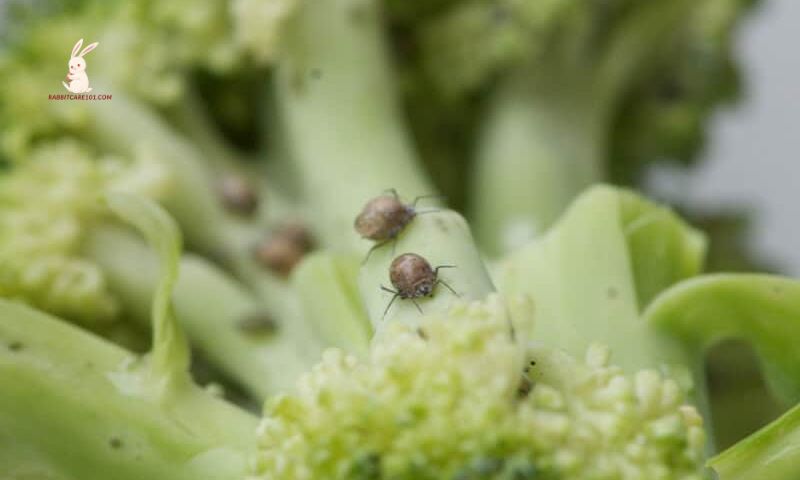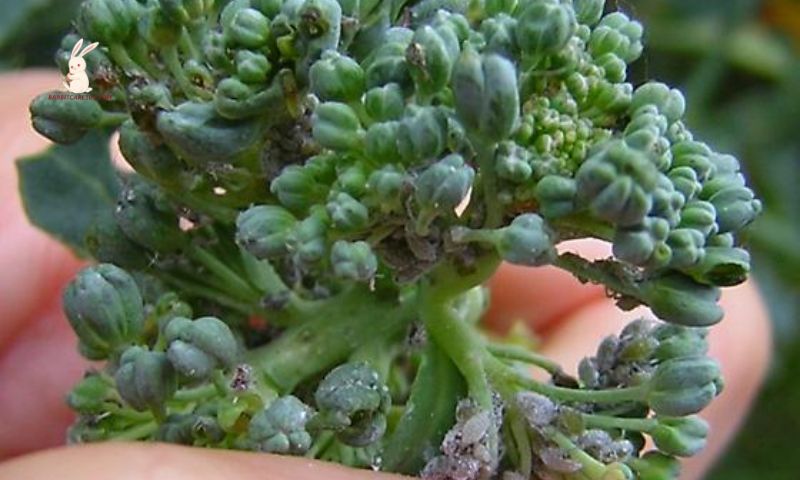Are you having trouble with Bugs In Broccoli? Few things rank higher on the “ick factor” than discovering bugs in broccoli just before you bite into it. It is very common to discover pests hiding inside broccoli florets or eating on the leaves because many pests appreciate broccoli plants even more than humans do. In this article, homegardenartful.com will talk about some of the most prevalent pests that eat broccoli and provide tips for avoiding them.
What to do if you discover pests in your garden-grown broccoli

The first thing to do when you notice a bug feeding on a broccoli plant is to get an accurate identification. Look at the creature closely. What color and shape is it? How is it moving? Does it consume broccoli florets, stems, or leaves? Is that just one bug or are there more of them? Do the leaves also have any eggs on them? You can correctly identify an object using any of these visual cues.
Let’s get to know some of the pests that plague broccoli plants the most.
What are Bugs In Broccoli?
Numerous species of what is frequently referred to as “broccoli worms” but are actually not worms at all exist. They are caterpillars instead. These so-called “worms” are actually the caterpillars of numerous butterfly and moth species that eat broccoli plants. They are the insects that eat broccoli the most frequently, therefore it’s crucial to keep them under control because they can swiftly do serious harm.
How to avoid having worms eat your broccoli

It’s time to control them once you’ve determined that the bug on your broccoli is a broccoli worm. Here are a few effective ways to get rid of these caterpillars.
Row cover: Row covers are laid over broccoli seedlings and left in place until harvest. They are inexpensive, lightweight, and practical all season long. Utilize the lightest weight row cover possible to keep heat from accumulating beneath because broccoli loves cooler climates. The row cover’s borders are secured with pins, and a little hoop tunnel is used to support it. In order to keep the adult butterflies or moths from laying eggs on your plants, it creates a barrier for them. Broccoli should always be grown in row covers.
Few companion plants have science to support them, despite the fact that several folklore-based companion plants claim to prevent different broccoli worms from your plants. It has been demonstrated that dill, chamomile, and cilantro interplanting decrease egg laying. It has also been demonstrated that growing broccoli with herbs with small flowers, such as parsley, fennel, chervil, and dill, will draw helpful insects that consume broccoli worms.
There are a few extremely helpful organic insecticide products that control different worms and other bugs in broccoli. My favorite caterpillar-controlling pesticide is Bt, which is based on bacteria. Products based on Spinosad, a fermented soil bacteria, are another effective product control for bugs in broccoli.
How to get rid of pests in broccoli after harvesting

There are a few ways to keep these insects off your dinner plate if you don’t find the bugs in your broccoli while picking the heads.
Offer the broccoli salt water soak in your sink or a big stock pot after harvest. Soak the broccoli in a gallon of cold water and a cup of salt. The insects will float to the top after 10 to 15 minutes and can be skimmed off. Before cooking, rinse the broccoli in clean, unsalted water.
You can alternatively soak your broccoli in a solution of 1 part diluted vinegar to 3 parts water. Any pests that may be hiding will soon float to the top as well as can be eliminated. Prior to cooking, rinse the broccoli.
Additionally, any broccoli worms present will always rise to the surface when broccoli is cooked (whether it is steamed or boiled), in case you missed any through a salt or vinegar soak. They will be easier to identify since they will be a lighter hue than the broccoli. They are simple to remove before serving.
Conclusion
Have you ever had to deal with Bugs In Broccoli? Which of them did you run into? And what approach did you discover to be efficient for handling them? Tell us in the comments section below.


